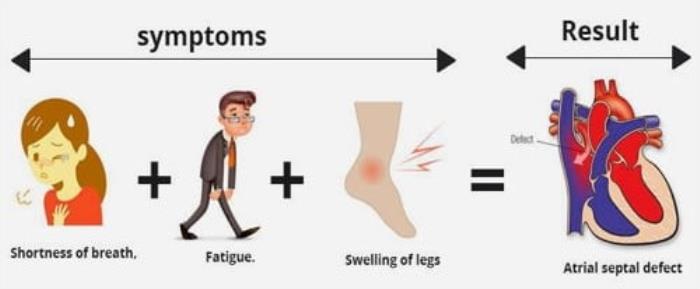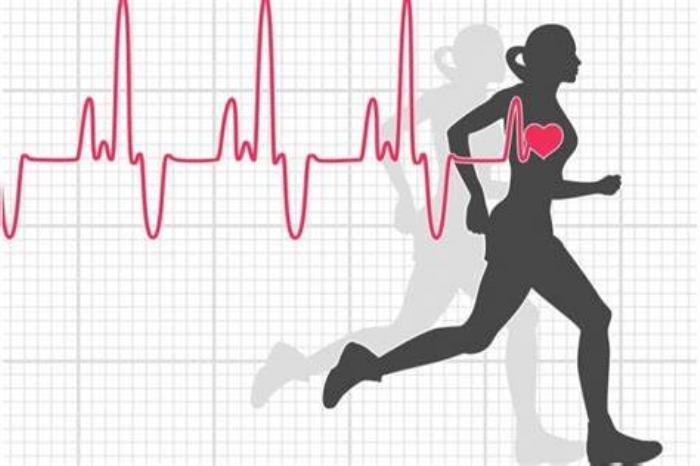Atrial Septal Defect (ASD) is a congenital heart defect that affects the heart’s ability to manage oxygen flow during physical activity. Understanding how ASD interacts with exercise is essential, especially since physical activity impacts the heart differently in those with ASD. With proper guidelines, most individuals with ASD can enjoy a healthy, active lifestyle while minimizing risks and maximizing cardiovascular benefits.
How ASD Affects the Heart During Exercise
In individuals with ASD, there is an abnormal opening between the heart’s atria, which allows oxygenated and deoxygenated blood to mix. This can lead to increased blood flow to the lungs and strain on the heart, especially during exertion. During exercise, the heart works harder to meet the body’s oxygen demands, which may exacerbate the effects of ASD in severe cases. Monitoring heart rate and energy levels is important for safely engaging in physical activities.
Common Symptoms of ASD During Physical Activity
People with ASD may experience symptoms like shortness of breath, fatigue, chest discomfort, or irregular heartbeat when engaging in physical activities. In more severe cases, symptoms can include dizziness or a decrease in exercise tolerance. Recognizing these symptoms and understanding individual limits is crucial, as it helps prevent overexertion and potential complications.

Exercise Guidelines for Children with ASD
For children with ASD, physical activity is usually encouraged but should be tailored to the child's condition and tolerance. Regular, moderate activities like walking, cycling, and swimming are generally safe and beneficial. It’s important to avoid overly strenuous activities, especially for children with large defects or those experiencing symptoms. Regular check-ups can guide parents and caregivers in setting safe activity boundaries for children with ASD.
Physical Activity Recommendations for Adults with ASD
Adults with ASD can often enjoy a range of exercises but may need to make adjustments depending on their condition. Those with smaller defects and minimal symptoms can participate in low- to moderate-intensity exercises, while adults with more pronounced symptoms or larger ASDs may need a tailored exercise plan. Consulting with a healthcare provider can help set achievable fitness goals that align with heart health.
Choosing Safe Exercises with an ASD
Low-impact exercises such as walking, light jogging, swimming, and yoga are generally safe for people with ASD. These activities promote cardiovascular health without placing too much strain on the heart. When beginning a new activity, starting slowly and gradually increasing intensity can help the body adapt safely to physical demands.
High-Intensity vs. Low-Intensity Workouts: What’s Safer?
For most individuals with ASD, low- to moderate-intensity workouts are safer, as they place less demand on the cardiovascular system. High-intensity exercises, which cause rapid increases in heart rate, may be unsuitable for those with severe ASD or related symptoms, as they increase the risk of overexertion and complications. Sticking to low-intensity activities allows for improved fitness levels while supporting heart health and ensuring long-term well-being.
Monitoring Heart Rate and Breathing During Exercise
For individuals with ASD, carefully monitoring heart rate and breathing during physical activity is crucial. Staying within a safe range helps prevent unnecessary strain on the heart and lungs. Heart rate monitors and wearables can be helpful in tracking exertion, allowing patients and their healthcare providers to adjust intensity levels as needed.

Importance of Avoiding Strain on the Heart
Avoiding strain is key for ASD patients, as high-intensity exercises can increase the heart’s workload, especially when the heart is already working harder due to the defect. Light to moderate exercises like walking or swimming are generally safer choices, as they provide cardiovascular benefits without placing excessive pressure on the heart.
The Role of Cardiopulmonary Exercise Testing in ASD
Cardiopulmonary exercise testing (CPET) is a useful tool for assessing how ASD patients respond to physical activity. By evaluating heart and lung function under controlled conditions, CPET helps determine safe exercise limits and guides the development of a personalized exercise plan. This testing can be valuable both before and after ASD closure surgery.
Sports Participation with ASD: What’s Permissible?
Participation in sports depends on the individual’s ASD size, symptom severity, and the recommendations of their cardiologist. Non-contact and moderate-intensity sports like cycling, golf, and certain types of dancing may be suitable for some patients, while high-intensity or contact sports might be discouraged due to potential cardiac risks.
Exercises to Avoid if You Have an ASD
Certain exercises, especially those that are high-impact or involve straining, are best avoided by ASD patients. Activities like weightlifting, sprinting, and extreme endurance sports can place additional strain on the heart, potentially worsening symptoms. Low-impact activities with steady exertion are typically better suited to individuals with ASD.
Adjusting Exercise Plans After ASD Closure Surgery
Following ASD closure surgery, exercise plans often need adjustments to accommodate recovery. Patients may gradually increase their activity levels over time, typically beginning with light activities. Cardiologists or cardiac rehab specialists can guide this process, setting safe goals and milestones for patients as they regain strength and cardiovascular function.
Benefits of Regular Physical Activity for Heart Health
Regular physical activity offers numerous benefits for ASD patients, including improved cardiovascular endurance, muscle strength, and mental well-being. Even gentle activities like yoga or daily walks can contribute to a healthier heart, better circulation, and overall quality of life, as long as they’re performed within safe limits.
Role of Cardiac Rehabilitation in Exercise Planning
Cardiac rehabilitation programs provide ASD patients with supervised, structured exercise sessions tailored to their individual needs. Rehab specialists work closely with cardiologists to monitor heart function during exercise, helping patients build strength safely while minimizing risks. This support can be especially valuable after surgery, helping patients transition back to active lifestyles.
Working with Cardiologists to Create a Safe Exercise Plan
Collaborating with a cardiologist is essential for developing a safe exercise plan that suits the unique needs of an ASD patient. Cardiologists can provide guidance on permissible exercise types, intensity levels, and warning signs to monitor. This partnership ensures patients are empowered to stay active while protecting their heart health.
Impact of ASD on Stamina and Endurance Levels
ASD can reduce stamina and endurance, particularly in cases where the heart has to work harder to circulate blood. Many ASD patients may find activities like running or long-distance walking more tiring. However, with a personalized exercise plan and gradual progression, stamina can often improve over time.
Real-Life Experiences: Staying Active with ASD
Many ASD patients lead active lives with appropriate adjustments. Hearing from individuals who manage ASD while staying fit can offer practical tips and encouragement. Real-life stories often highlight the benefits of consistent, moderate activity and the positive impact it can have on both mental and physical health.
Future Outlook: Exercise Innovations for ASD Patients
Innovative exercise programs and wearable technologies are paving the way for safer, more personalized exercise options for ASD patients. As technology advances, real-time monitoring of heart function during exercise and adaptive exercise routines will likely become more accessible, enhancing safety and enjoyment for patients.
The Role of Medications in Managing ASD Symptoms
Understand the role of medications in managing symptoms of ASD. This section discusses various medications prescribed to alleviate symptoms, the importance of adherence to treatment plans, and how they contribute to improved quality of life for those affected by ASD.
Risks and Complications Associated with ASD Closure Surgery
Get informed about the risks and complications associated with ASD closure surgery. This section outlines potential risks, what patients should be aware of before undergoing surgery, and how healthcare providers work to minimize these risks to ensure safe and effective treatment.
Conclusion: Finding a Balanced Approach to Physical Activity with ASD
For individuals with ASD, exercise is not only possible but can also be highly beneficial when approached with caution. With guidance from healthcare providers and a balanced approach, ASD patients can enjoy the physical and mental rewards of an active lifestyle. By following personalized exercise plans, monitoring heart health, and making adjustments as needed, patients can work toward a healthier heart and improved quality of life.
Best ASD Closure Surgery in India
The Best ASD Closure Surgery in India is a procedure designed to close a hole in the heart’s atrial septum, improving blood flow and overall cardiac health in patients with atrial septal defects.
Best ASD Closure Surgery Hospitals in India
The best asd closure surgery hospitals in india provide advanced facilities and specialized cardiac teams, ensuring comprehensive care from initial assessment to post-surgical recovery.
ASD Closure Surgery Cost in India
The asd closure surgery cost in india is affordable and transparent, offering patients high-quality care and a range of options to suit their needs.
Best ASD Closure Surgeons in India
The Best ASD Closure Surgeons in India are experts in congenital heart procedures, providing personalized care and a high success rate for patients with atrial septal defects.
FAQ
What types of exercises are safe for someone with ASD?
Low-impact exercises like walking, swimming, and cycling are generally safe and beneficial for individuals with ASD, as they provide cardiovascular benefits without excessive strain.
Can high-intensity activities worsen ASD symptoms?
Yes, high-intensity activities can place additional stress on the heart and may exacerbate symptoms, particularly in patients with larger ASDs or existing symptoms.
How does ASD affect endurance and stamina?
ASD can decrease stamina and endurance due to the heart working harder to compensate for the defect. Tailored exercise routines can help improve endurance over time.
Are children with ASD allowed to participate in sports?
With a doctor’s guidance, children with small or mild ASD may participate in non-contact, moderate-intensity sports. Individual assessments determine what’s safe based on the child’s unique needs.
How soon after ASD closure surgery can I resume physical activities?
Patients are typically advised to start with light activities and gradually increase intensity under their healthcare provider's guidance. Full activity resumption can depend on individual recovery progress.